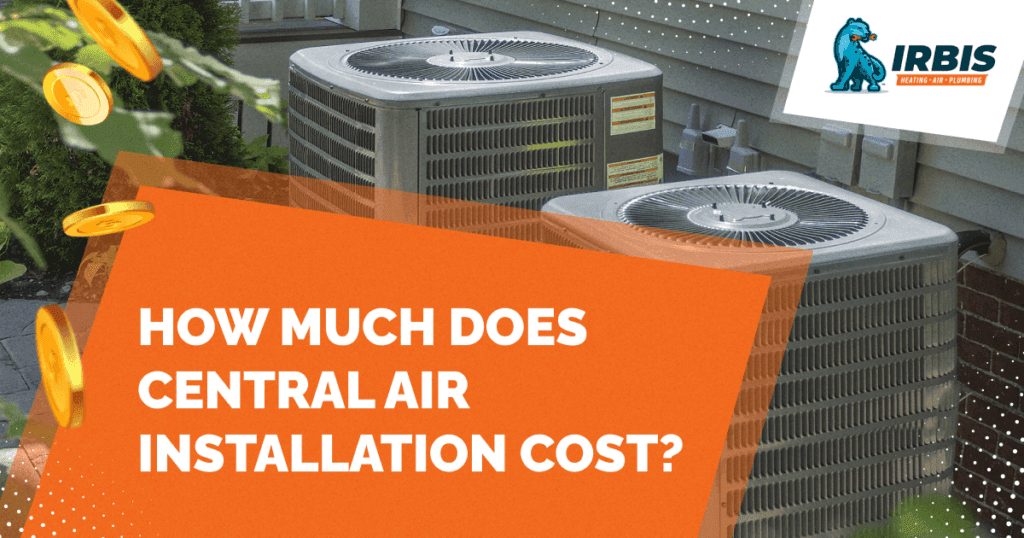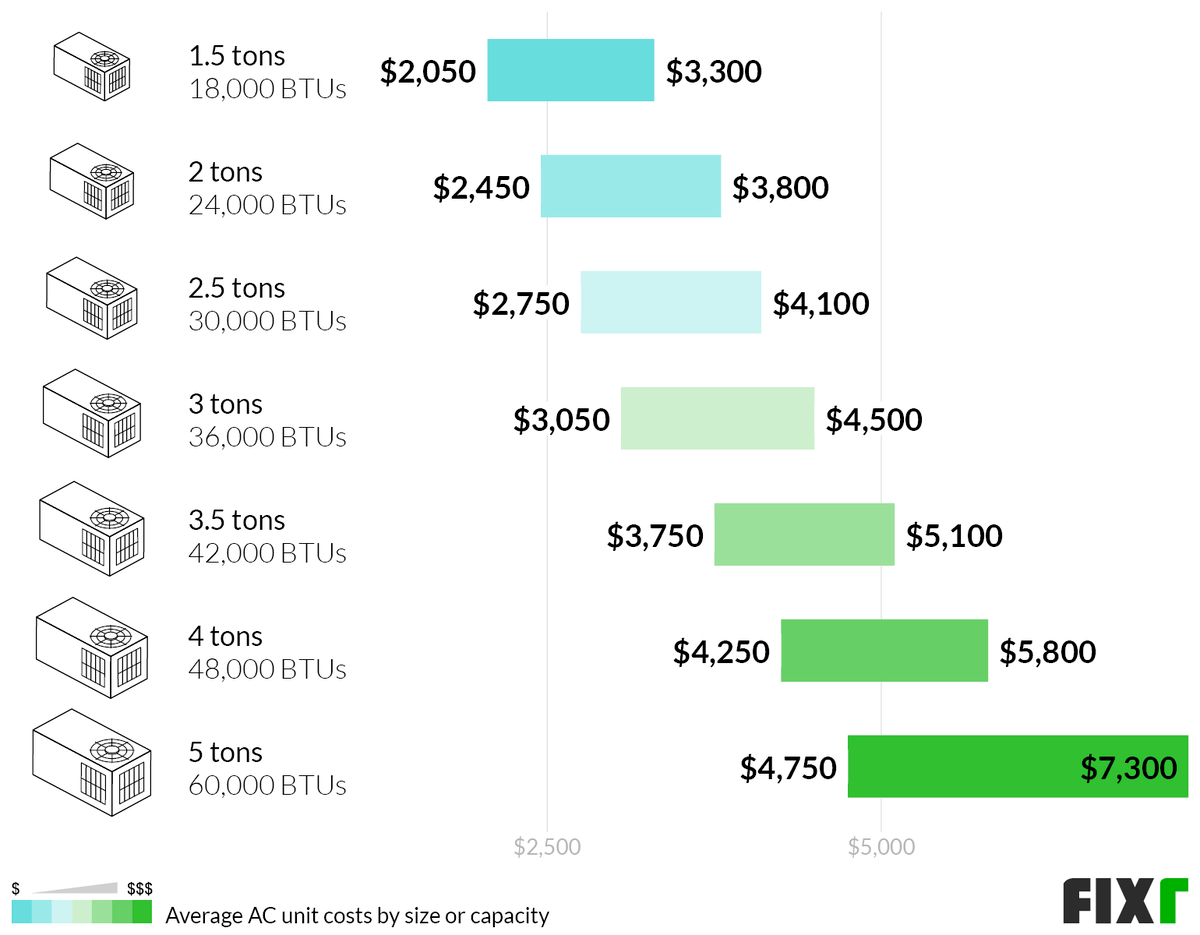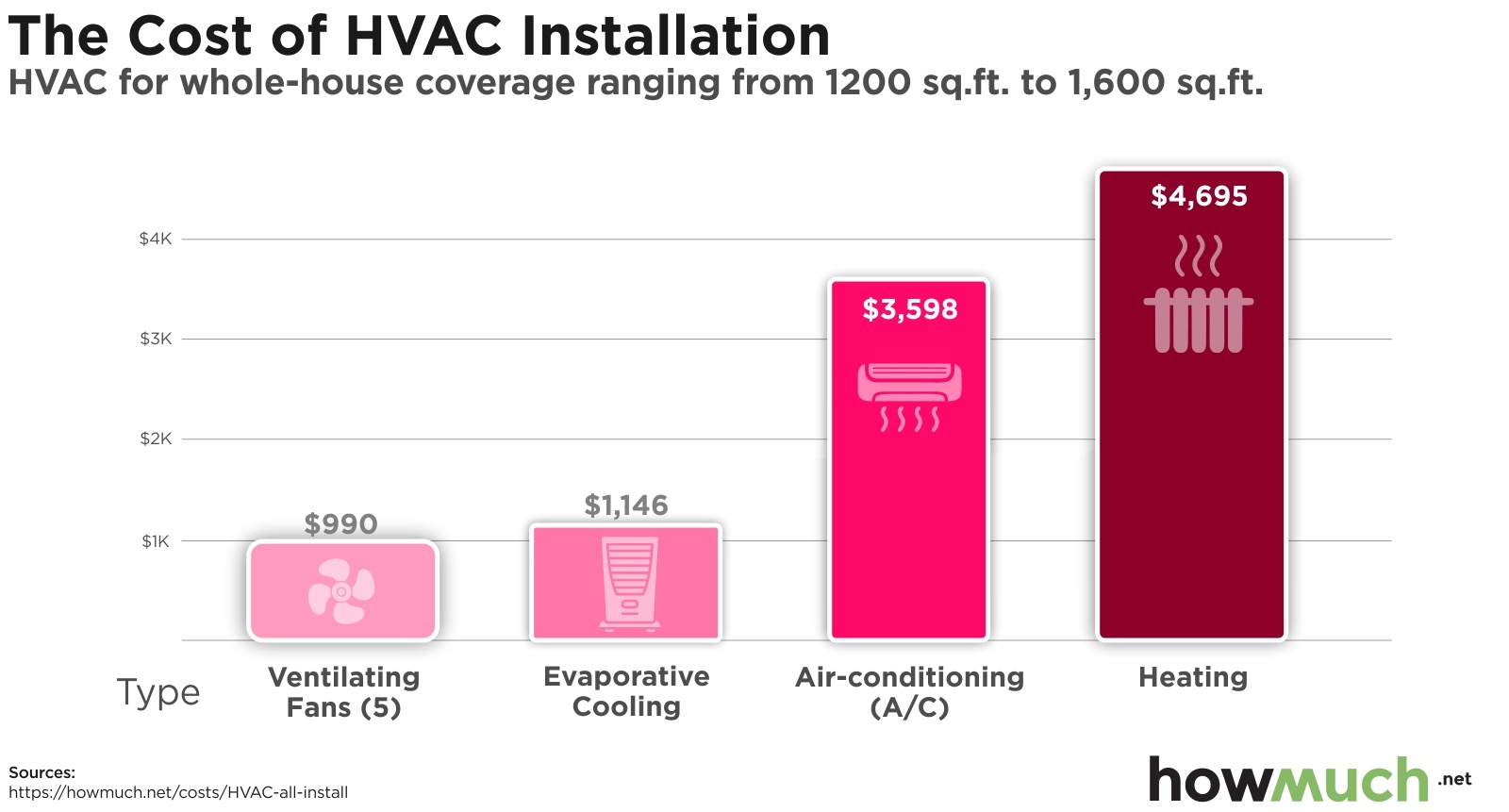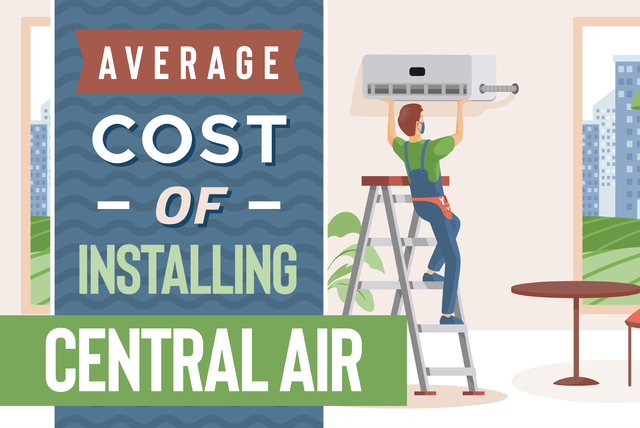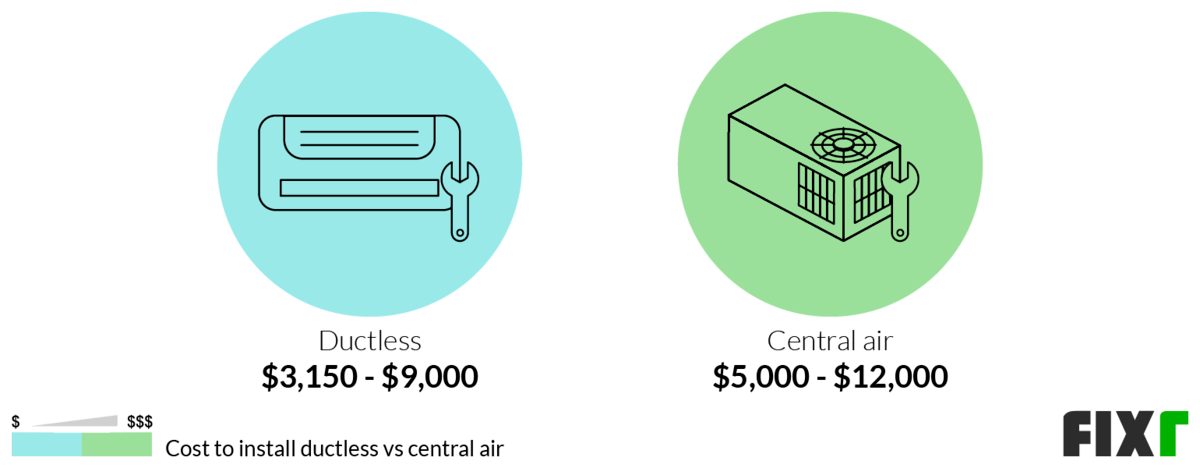Average Cost Of Central Air Installation

Frequently Asked Questions: Central Air Installation Costs
Installing central air conditioning is a significant investment in your home's comfort and value. Understanding the costs involved is crucial for budgeting and making informed decisions. This FAQ aims to answer your most pressing questions about the average cost of central air installation.
Question 1: What's the average cost to install central air conditioning in a typical home?
The average cost to install a central air conditioning system in a typical U.S. home ranges from $3,000 to $7,000. However, this is a broad range, and the actual cost can vary significantly based on several factors we'll discuss below. This range generally includes the cost of the unit itself, labor for installation, and basic materials.
Question 2: What factors influence the cost of central air installation?
Several factors impact the overall cost. Here are some of the most important ones:
- Size of the Home: Larger homes require more powerful (and therefore more expensive) AC units. The cooling capacity is measured in BTUs (British Thermal Units).
- Type of AC Unit: There are different types of central AC systems, such as split systems and packaged units. Split systems, where the condenser is outside and the evaporator inside, are more common for residential use. Packaged units combine everything in one outdoor unit, which can affect installation costs.
- SEER Rating: The SEER (Seasonal Energy Efficiency Ratio) rating indicates the unit's energy efficiency. Higher SEER ratings mean greater energy savings over time but typically come with a higher upfront cost. Aim for a minimum of 14 SEER, but units with 16 SEER or higher are increasingly popular.
- Ductwork: If your home doesn't already have ductwork, installing it can add substantially to the cost, potentially increasing the total project cost by $2,000 to $5,000 or more. Existing ductwork may also need modification or repair, adding to the expense.
- Labor Costs: Labor costs vary depending on your location and the contractor's rates. Getting multiple quotes is essential to ensure you're getting a fair price.
- Permits and Inspections: Your local municipality may require permits and inspections for AC installation, which can add to the overall cost.
- Brand and Features: Certain brands are known for their reliability or advanced features, which can command a premium price. Consider features like smart thermostats or variable-speed blowers.
- Accessibility: Difficult access to the installation location (e.g., a cramped attic or crawl space) can increase labor time and costs.
- Electrical Work: The existing electrical panel might need upgrades to handle the new AC unit's power requirements. This can add a few hundred dollars to the total cost.
Question 3: How do I determine the right size AC unit for my home?
Choosing the right size AC unit is crucial for both comfort and efficiency. An undersized unit won't adequately cool your home, while an oversized unit will cycle on and off frequently, leading to uneven temperatures, higher energy bills, and increased wear and tear. Here's how to determine the correct size:
- Professional Load Calculation: The most accurate method is to have a qualified HVAC technician perform a load calculation. This involves considering factors such as your home's square footage, insulation levels, window sizes and orientation, climate, and the number of occupants.
- Square Footage Rule of Thumb: A general rule of thumb is that you'll need approximately 20 BTU per square foot. For example, a 1,500 square foot home might require a 30,000 BTU AC unit (2.5 tons). However, this is just a rough estimate, and a professional load calculation is always recommended.
- Avoid Oversizing: It's better to err on the side of slightly undersized than oversized. An oversized unit can lead to short cycling, which is inefficient and uncomfortable.
- Consider Climate: Homes in hotter climates will require larger AC units than those in cooler climates.
Question 4: How much can I expect to pay for ductwork installation if my home doesn't have existing ducts?
Installing ductwork is a significant expense. The cost can range from $2,000 to $5,000 or even higher, depending on the size and complexity of your home and the type of ductwork installed. Several factors affect the ductwork cost:
- Home Size and Layout: Larger and more complex homes require more ductwork, increasing the material and labor costs.
- Ductwork Material: Different ductwork materials have varying costs. Sheet metal ducts are durable but more expensive to install than flexible ducts. Flexible ducts are easier to install but may not be as durable or efficient.
- Accessibility: Difficult access to attics, crawl spaces, or walls can increase labor time and costs.
- Labor Costs: Ductwork installation requires skilled labor, so labor costs can vary depending on your location and the contractor's rates.
- Permits and Inspections: Ductwork installation may require permits and inspections, adding to the overall cost.
- Sealing and Insulation: Properly sealing and insulating ductwork is essential for energy efficiency. These services add to the upfront cost but will save you money on energy bills in the long run.
Question 5: What are some ways to potentially save money on central air installation?
While central air installation is a considerable investment, there are several ways to potentially reduce costs:
- Get Multiple Quotes: Obtain quotes from at least three different HVAC contractors. Compare not only the price but also the equipment being offered, the contractor's experience, and their warranty.
- Choose the Right Size Unit: As mentioned earlier, avoid oversizing. A properly sized unit will be more efficient and cost less to operate.
- Consider a Less Expensive Unit: While higher SEER ratings offer long-term savings, they also come with a higher upfront cost. Consider a unit with a lower SEER rating if your budget is tight. However, carefully weigh the long-term energy savings against the initial cost difference.
- Look for Rebates and Incentives: Many utility companies and government agencies offer rebates and incentives for installing energy-efficient HVAC systems. Check with your local utility company and the ENERGY STAR website.
- Off-Season Installation: HVAC contractors may offer lower prices during the off-season (spring or fall) when demand is lower.
- Maintain Existing Ductwork: If you already have ductwork, ensure it's in good condition and properly sealed. Repairing and sealing existing ducts is usually less expensive than installing new ducts.
- Finance Options: Explore financing options offered by contractors or lenders. Some offer low-interest or deferred payment plans.
- Negotiate: Don't be afraid to negotiate with contractors. They may be willing to lower their price to secure your business.
Question 6: What are the ongoing operating costs of a central air conditioning system?
Beyond the initial installation, understanding the ongoing costs is critical for budgeting purposes. The primary ongoing cost is your electricity bill. Several factors influence this:
- SEER Rating: Higher SEER ratings translate to lower energy consumption and lower electricity bills.
- Usage: How often and how long you run your AC significantly impacts your energy consumption.
- Climate: Homes in hotter climates will naturally use more electricity for cooling.
- Electricity Rates: Electricity rates vary by location.
- Home Insulation: Poor insulation forces your AC to work harder to maintain a comfortable temperature, increasing energy consumption. Improving insulation can significantly reduce your cooling costs.
- Thermostat Settings: Setting your thermostat a few degrees higher can save you a significant amount of money on your energy bill. Consider using a programmable or smart thermostat to automatically adjust the temperature when you're away or asleep.
- Maintenance: Regular maintenance, such as cleaning or replacing air filters, ensures your AC system operates efficiently. A clogged air filter restricts airflow, forcing your AC to work harder and consume more energy.
In addition to electricity, you'll also have maintenance costs. This includes:
- Air Filter Replacement: Replace air filters every 1-3 months, depending on usage and air quality.
- Annual Maintenance: Schedule an annual maintenance checkup with an HVAC technician. This typically includes cleaning the coils, checking refrigerant levels, and inspecting the system for any potential problems.
- Repairs: Even with regular maintenance, AC systems can occasionally require repairs. Budgeting for potential repairs is essential.
Question 7: How do I choose a reliable central air installation contractor?
Choosing the right contractor is just as important as choosing the right AC unit. Here's how to find a reliable installer:
- Check Licensing and Insurance: Ensure the contractor is licensed and insured in your state. This protects you from liability if something goes wrong during the installation.
- Read Reviews and Testimonials: Check online reviews and testimonials on websites like Google, Yelp, and the Better Business Bureau.
- Ask for References: Ask the contractor for references from past clients. Contact these references to get feedback on the contractor's work.
- Verify Experience: Choose a contractor with several years of experience installing central air systems.
- Get a Written Estimate: Obtain a detailed written estimate that includes the cost of the unit, labor, materials, permits, and any other fees.
- Check for Certifications: Look for contractors who are certified by organizations like NATE (North American Technician Excellence).
- Ask About Warranty: Clarify the warranty on both the AC unit and the installation work.
- Trust Your Gut: Choose a contractor you feel comfortable with and trust to do a good job. Communication is key.
By carefully considering these factors and asking the right questions, you can confidently navigate the central air installation process and make informed decisions that ensure your home stays cool and comfortable for years to come.
